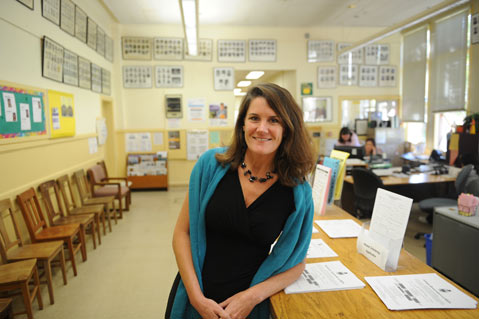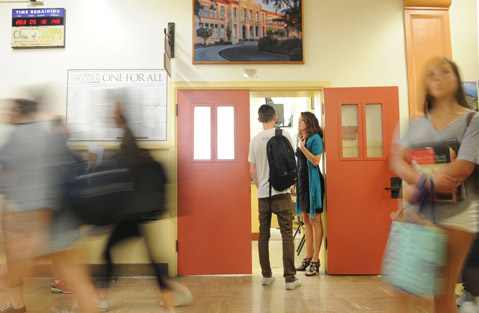The Role of High School Counselors
The Versatile Work of School Guidance Counselors

An overwhelming majority of both private- and public-school students in Santa Barbara are bound for two- and four-year colleges. But before humming the incessant graduation tune few people call by name (it’s “Pomp and Circumstance”), the tedious college-application process — now in full swing — consumes students and parents. Though several people play important roles in the process, high school counselors deserve a nod for the versatile work they do in helping kids go on to higher education.
From meeting with students who have Ds and Fs to writing letters of recommendation to advising students on social and emotional matters, high school counselors have daily schedules that are often packed. The competition to get into college has escalated almost as much as the tuition and fees. It’s no secret that teenagers applying to college today face a more difficult task than high school seniors confronted in past generations.
“[The public school counselor’s] job isn’t to get them into college; it’s to get them out of high school,” said Lynn Hamilton, who runs an independent college-application workshop and works part-time at Anacapa School. But public-school counselors do more than simply make sure their students pass geometry and meet the A-G requirements (courses that are UC approved).

“But that’s why [my job is] so cool. The variety is incredible,” said Santa Barbara High School counselor Susan Snyder. “You never get a moment to just relax.” An Illinois native, Snyder attended Santa Barbara City College and taught math and science at La Cuesta Continuation High School before transitioning to counseling. Snyder encourages her students to think outside the box when choosing a suitable school. “Look at Indiana, Kentucky, Wyoming, Ohio,” she advised, and “research colleges that have some of the same programs as the most selective schools.”
Snyder also puts together city college, University of California, and financial-aid workshops, targeting students whose parents did not go to college. “The parents in this town amaze me … from the rich Montecito parents to the parents who are working two full-time jobs, they’re all such great parents,” Snyder said. Hands-on parents — who are often termed “helicopter parent,” which has a negative connotation — are actually quite helpful, especially because many students have jam-packed schedules.
Some private-school counselors have as few as 40 students, as opposed to the nearly 400 students seen by their public-school counterparts, but they are expected “to get kids into college” and have the luxury of focusing on just that.
“The competition has grown so fiercely,” said Cate School counseling director Anne Hall, who has seen increased intensity in the 30 years she has been a counselor. “There is a heat of competition and process,” Hall said. “Colleges are asking more of kids, not less.”
Karl Revells, the only counselor at Laguna Blanca’s Upper School, said he sometimes feels as if his job has become that of a lifeguard who quells anxious students and parents during the intense college-application season. “Kids have become so homogenized because they all do the same things that the schools want,” Revells said. “My job is to catch the attention of admissions officers.”
However, not all students should be pushed to go to a four-year college. “We have to be careful not to put every student in a square peg,” said longtime San Marcos counselor Sergio Castellanos. “We need to do more vocational work,” he said, explaining that roughly 10-20 percent of San Marcos students seek vocational programs such as ITT Technical Institute, Fashion Institute of Design and Merchandising, DeVry University, and Paul Mitchell School.
“We’ve lost the craftsmanship … woodshop making,” said Castellanos. “Although we have a class like that, it really doesn’t lend itself to construction. It’s an untapped area that we need to explore further.”
For those seeking higher education, Hamilton’s last bit of advice for submitting the UC application (due on November 30) was this: “Get it out before Thanksgiving because that’s when the site crashes.”



